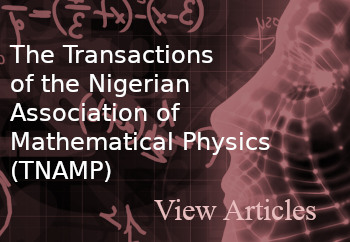PREPARATION OF REDUCED GRAPHENE OXIDE: APPLICATION IN A PATTERNED TEMPERATURE SENSOR
Keywords:
Sensor, Patterned Temperature, Graphene OxideAbstract
In this study, an efficient way of fabricating a reduced graphene oxide (rGO) patterned temperature sensor and its sensing properties was demonstrated. The sensor device was fabricated by drop casting the GO solution directly on the platinum interdigital electrodes (Pt-IDE) and was allowed to dry and then heated at about 400oC for few minutes then followed by hydrazin vapor treatment. Profilometrry, UV-VIS spectroscopy and Hall effect measurement was used to characterize the structural properties of this device. The temperature sensing properties of rGO were meassured from 35- 150 oC and it was found that the resistance decreases exponentially with increasing temperatrure which is similar to that of a standard thermistor. The high sensivity, stability and repeatability of the rGO sensor observed are favourable for its patterned temperature sensing applications.
Downloads
References
Novoselov K.S, Geim A.K, Morozov S.V, Jiang D, Zhang Y, Dubonos S.V, Grigorieva I.V, Firsov A.A. (2004).Electric field effect in atomically thin carbon films. Science. 306(5696):666-669.
Novoselov, K.S., Jiang, D., Schedin, F., Booth, T.J., Khotkevich, V., Morozov, S.V. and Geim, A.K. (2005) Two Dimensional Atomic Crystals. Proceedings of the National Academy of Sciences of the United States of America, 102, 10451-10453.
Rowley-Neale, S.J., Randviir,E.P., Dena,A.S.A., and Banks,C.E.(2018). An overview of recent applications of reduced graphene oxide as a basis of electroanalytical sensing platforms. Applied Materials Today. 218-226
Rhazouani, A., Gamrani, H., El Achaby, M., Aziz, K., Gebrati, L., Uddin, M. S., & Aziz, F. (2021). Synthesis and toxicity of graphene oxide nanoparticles: A literature review of in vitro and in vivo studies. BioMed Research International
Chen J.H, Jang C, Xiao S, Ishigami M, Fuhrer M.S. (2008).Intrinsic and extrinsic performance limits of graphene devices on SiO2. Nat Nanotechnology(4):206-9. Geim A.K., Novoselov K.S.(2007). The rise of graphene. Natural Material. 6(3):183-91.
Choi, W., Lahiri, I., Seelaboyina, R., & Kang, Y. S. (2010). Synthesis of graphene and its applications: a review. Critical Reviews in Solid State and Materials Sciences, 35(1), 52-71.
Sahoo, S., Barik, S.K, Sharma, G.L., Khurana, G., Scott,J.F and Katiyar, R.S.(2012). Reduced graphene oxide as ultra fast temperature sensor. https://www.researchgate.net/publication/222942785
Allen, M. J., Tung, V. C., & Kaner, R. B. (2010). Honeycomb carbon: a review of graphene. Chemical reviews, 110(1), 132-145.
Compton, O. C., & Nguyen, S. T. (2010). Graphene oxide, highly reduced graphene oxide, and graphene: versatile building blocks for carbon‐based materials. small, 6(6), 711-723.
Acik, M., Mattevi, C., Gong, C., Lee, G., Cho, K., Chhowalla, M., & Chabal, Y. J. (2010). The role of intercalated water in multilayered graphene oxide. ACS nano, 4(10), 5861-5868.
Zhou, Q., Wu, M., Zhang, M., Xu, G., Yao, B., Li, C., & Shi, G. (2017). Graphene-based electrochemical capacitors with integrated high-performance. Materials Today Energy, 6, 181-188.
Neella, N., Gaddam, V., Nayak, M. M., Dinesh, N. S., & Rajanna, K. (2017). Scalable fabrication of highly sensitive flexible temperature sensors based on silver nanoparticles coated reduced graphene oxide nanocomposite thin films. Sensors and Actuators A: Physical, 268, 173-182.
Štulík, J.; Musil, O.; Josefík, F.; Kadlec, P. (2022) Graphene-Based Temperature Sensors–Comparison of the Temperature and Humidity Dependences. Nanomaterials .12, 1594.
Zhang, Z., Cai, R., Long, F., & Wang, J. (2015). Development and application of tetrabromobisphenol A imprinted electrochemical sensor based on graphene/carbon nanotubes three-dimensional nanocomposites modified carbon electrode. Talanta, 134, 435-442.
Yang, H., Li, H., Zhai, J., Sun, L., & Yu, H. (2014). Simple synthesis of graphene oxide using ultrasonic cleaner from expanded graphite. Industrial & Engineering Chemistry Research, 53(46), 17878-17883.
Coroş, M., Pruneanu, S., & Stefan-van Staden, R. I. (2019). Recent progress in the graphene-based electrochemical sensors and biosensors. Journal of the electrochemical society, 167(3), 037528.
Shimoi, N., & Komatsu, M. (2021). Application of exfoliated graphene as conductive additive for lithium-ion secondary batteries. Powder Technology, 390, 268-272.
Adetayo, A., & Runsewe, D. (2019). Synthesis and fabrication of graphene and graphene oxide: A review. Open journal of composite materials, 9(02), 207.
Kairi, M. I., Dayou, S., Kairi, N. I., Bakar, S. A., Vigolo, B., & Mohamed, A. R. (2018). Toward high production of graphene flakes–a review on recent developments in their synthesis methods and scalability. Journal of Materials Chemistry A, 6(31), 15010-15026.
Blackburn, D.L.(2004). In Proceedings of the Semiconductor Thermal Measurement Symposium, Twentieth Annual, IEEE, San Jose, USA, 70:9-11
Young, D. T., Chapman, L., Muller, C. L., Cai, X. M., & Grimmond, C. S. B. (2014). A low-cost wireless temperature sensor: Evaluation for use in environmental monitoring applications. Journal of Atmospheric and Oceanic Technology, 31(4), 938-944.
Ekpekpo A., Iyayi S.E., Aiyehuyin E.O (2010). Phase Transitions for Unconventional Superconductivity. International Journal of Research and Reviews in Applied Sciences, 5(3), 305-309.
Khurana, G., Sahoo, S., Barik, S. K., Kumar, N., Sharma, G. L., Scott, J. F., & Katiyar, R. S. (2018). Reduced graphene oxide as an excellent temperature sensor. Journal of Nanoscience and Nanotechnology Applications, 2(101).
Sahatiya, P., Puttapati, S. K., Srikanth, V. V., & Badhulika, S. (2016). Graphene-based wearable temperature sensor and infrared photodetector on a flexible polyimide substrate. Flexible and Printed Electronics, 1(2), 025006.
Khurana, G., Kumar, N, Kotnala, R.K., Nautiyal, T,and Katiyar, R..S. (2013). Temperature tuned defect induced magnetism in reduced graphene oxide. Nanoscale 5:3346-3351.

Downloads
Published
Issue
Section
License
Copyright (c) 2023 The Journals of the Nigerian Association of Mathematical Physics

This work is licensed under a Creative Commons Attribution-NonCommercial-ShareAlike 4.0 International License.




